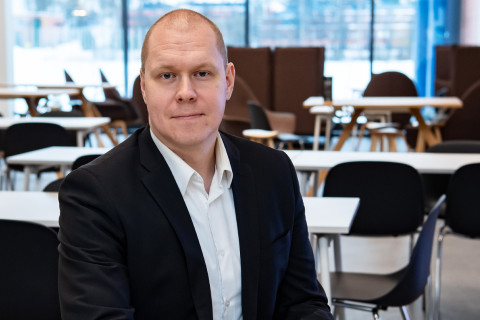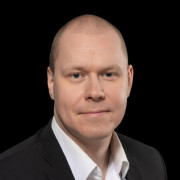“Medical physics and biomedical engineering are mutually supportive fields. Our programme for medical physicists is one of the field’s most demanding programmes in the world,” Professor Petro Julkunen says.
“In Finland, physics and engineering have a long and strong tradition. For us, technology continues to be a strong export, although a large proportion of our technology companies have already been sold abroad,” Julkunen says.
“Finland is a small country with few experts in our field. Since hospitals are spread across the whole of Finland, a broad understanding of matters is essential. Our field is constantly evolving, and it is also heavily regulated. We aim at a high standard of operations in order to better serve society at large.”
Julkunen’s professorship is divided in half between the university and Kuopio University Hospital, where he works as a part-time chief physicist. Back in the day, he graduated with a Master’s degree in technology from Tampere University of Technology, majoring in biomedical engineering. He started pursuing a career as a medical physicist in Kuopio, thanks to being persuaded by Professors Jukka Jurvelin and Rami Korhonen.
Julkunen has his own research group at the hospital.
“The most interesting topics of research in our filed are currently related to non-invasive methods, such as improving the clinical accuracy of neuromodulation.”
Nowadays, neuromodulation is routinely used to treat patients with depression and pain, as well as neurosurgery patients. The results of years of research have been introduced to clinical use and for the benefit of patients.
“We must keep our eye on the outcomes of research, i.e., how they benefit patients. This can only be achieved through good collaboration with companies, allowing us to be involved in the development of new devices,” Julkunen says.
“We are conducting translational research to develop prototypes of devices and new examination methods for clinical use. We are currently carrying out a clinical trial in the treatment of depression, and we have also secured funding to study knee joint pain and the effects of surgery.”
According to Julkunen, medical physics and engineering is a field suitable for innovative people who want to show their skills and use them for the benefit of others.
“And what’s best, this is usually not just routine work; instead, we direct ourselves at solving problems and at developing the entire field of medical physics. Career-wise, our programme will open many doors and it is up to graduates to decide which ones to open.”
For further information, please contact:
Professor Petro Julkunen, [email protected]
Print-quality photos, photo1 and photo2
***
Petro Julkunen, Professor of Medical Physics and Biomedical Engineering, University of Eastern Finland, 1 January 2022–
Professor of Neuromuscular Biomechanics and Imaging, Faculty of Science and Forestry, University of Eastern Finland, 2016
Title of Docent in Medical Physics, especially Neurophysiology Physics, University of Kuopio, 2009
Medical Physicist, University of Kuopio, 2009
PhD, University of Kuopio, 2008
Master of Science (Technology), Tampere University of Technology, 2004
Key roles and elected positions
Professor (50%), Department of Applied Physics, Faculty of Science and Forestry, University of Eastern Finland
Chief Physicist (50%), Diagnostic Imaging Centre, Kuopio University Hospital
Member of the Advisory Board for Radiation Safety, Radiation and Nuclear Safety Authority
Committee Member of Academic Engineers and Architects in Finland - TEK
Chair and Radiation Safety Specialist of the University of Eastern Finland’s Radiation Safety Committee
Panel Member in the National Publication Forum, Panel 11: Medical Engineering, Biotechnology and Basic Medicine
Vice-Chair of the National Council of Medical Physicist Training in Finland
Advisory Research Board Member, Kuopio University Hospital




